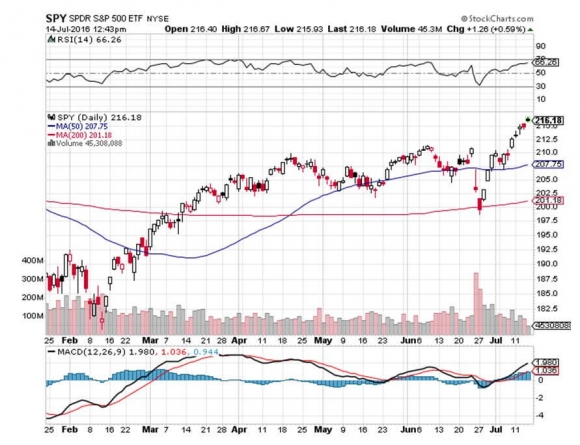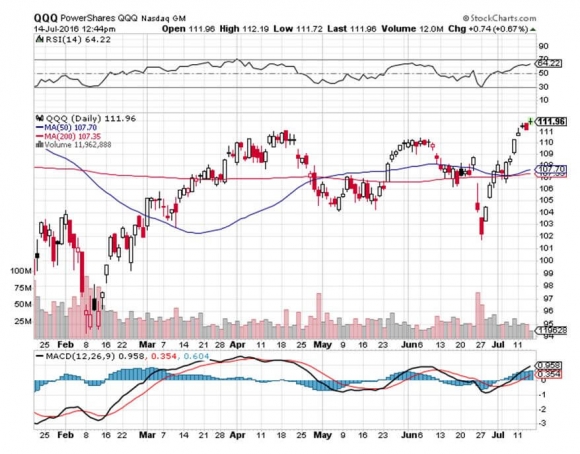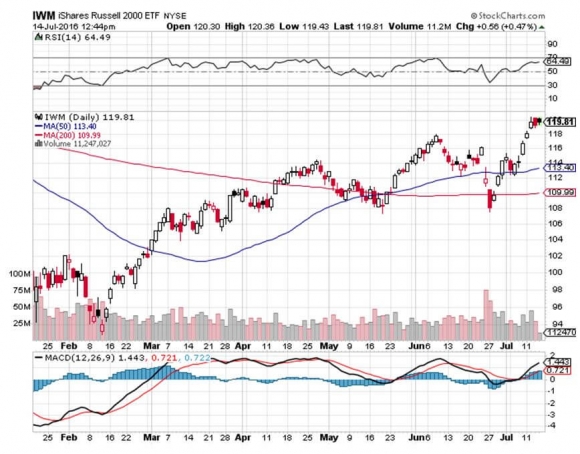Why U.S. Stocks Could Rise 50% Higher
When things are going to happen, and the market gets a whiff of it, fast forward often kicks in.
That seems to be what is happening to my forecast that US stocks would end 2016 on the back of both rising earnings and a price earnings multiple expansion.
Hey Mr. Market! Check your watch! You’re three months early!
Earnings are growing modestly, as I expected. But multiple expansion has taken off like a rocket and is approaching the highs not seen since the 2000 dotcom bubble top.
S&P 500 earnings multiple are about to approach the 20X line, and 21X beckons.
How high will multiples rise in this cycle? The old previous high of 26X seems like a chip shot.
However, we now live in a brave new world.
Is a 30X multiple possible? That would require the stock market to rise by 50% on current earnings, and much more if they start to reaccelerate as well, which seems to be happening now.
This could take the Dow Average up to an eye popping 27,000, and the S&P 500 (SPX) to a scorching 3,227.
But wait! There’s more!
If earnings and multiples BOTH rise 50% each, as we enter the 2020’s, that boosts the Dow Average up to a fanciful 40,000, and the S&P 500 (SPX) to an unbelievable 4,837.
Is anyone ready to sit down and have a stiff drink yet? I recommend the Jameson 12 year old, neat. A bottle will do.
I have been predicting these levels for years. I just didn’t think they would appear so quickly.
There is no shortage of reasons for the current, out-of-the-blue stock melt up.
The negative interest rates that now afflict the bulk of the world’s bond markets are a major cause.
These are the result of global central banks absolutely flooding the world’s financial markets with liquidity.
A surprise Brexit vote put a turbo-charger on this trend from which ultra high bond prices are yet to retreat.
The harsh reality that the bond bears fail to face is that there is a global bond SHORTAGE!
This is why the 30-year US Treasury bond with a 2.20% yield is well below the average stock dividend yield of 2.5%.
Record high bonds prices suddenly made stocks look cheap, not just in the US, but globally.
And guess what? Everyone was underweight stocks, and increasingly so.
Every crisis of the past year panicked investors into dumping stocks at market lows, be it the prospect of a Chinese economic collapse, a Donald Trump presidency, or Britain leaving the EC.
None of these things happened (Brexit will get undone), so stocks quickly snapped back every time.
This is why cash levels are at multi-decade peaks, and we are all underweight stocks, in a market that is appreciating to new all time highs daily.
Once again, buying stocks AND bonds on every dip for the past seven year now looks like a stroke of genius.
Dow 100,000 anyone? If you don’t like that, how about Dow 200,000?
And I penned that prediction way back when the (SPY) PE multiple was still at a lowly 16X.
Why can’t you find such ambitious forecasts elsewhere? I am told that being negative sells more newsletters, and being hugely negative sells millions of them.
Just thought you’d like to know.




The Diary of a Mad Hedge Fund Trader, published since 2008, ...
more



good luck on that forecast John. I don't share it for a minute
The author is right about #zirp shoving up asset prices. The issue is they already have been shoved up. If you look at Japan as an example, the rise in multiple from there for Japan was caused equally by the collapse of earnings and growth from their central banks monetary escapades. We are only now seeing the slow growth erode earnings for out companies.
I am hopeful good companies will avoid this rise in stock multiples and will inevitably rise in value instead although I know most companies will not avoid this fate.